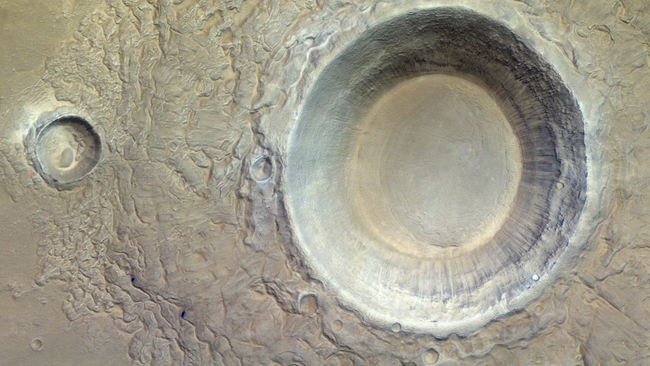Giant Martian crater may shed light on ancient life on the planet
A new image of Utopia Planitia taken by the ExoMars Trace Gas Orbiter (TGO) shows a huge impact crater dominating the image.
This colossal impact basin, formed by the impact of an ancient asteroid, is the largest known impact crater in the entire solar system. Its diameter is about 3,300 kilometers, which is twice the extent of the Sahara Desert from north to south. Interesting icy features on and below the crater's surface provide clues to water in Mars' past, according to the European Space Agency (ESA).
This is one of the many scars left on Mars by asteroids. Water, volcanic activity and asteroid impacts shaped the planet's surface in the distant past. Currently, Mars is a cold and arid desert, — says the ESA statement.
The image was taken by the CaSSIS camera (color and stereoscopic surface imaging system) of the ExoMars apparatus from a distance of only 400 kilometers above the crater. From this vantage point, the crater almost completely fills the camera's field of view. On May 15, ESA published a new panoramic photograph of the region.
Utopia Plains is known to have icy features, including frost that forms on its surface during the Martian winter. The crater itself, about 8 kilometers in diameter, shows signs of ejecta, suggesting the presence of water ice in the region at the time of the asteroid impact in the distant past. The heat generated by the impact would melt this ice, causing the resulting mixture of liquid water and dust to escape.
«The smooth appearance of the crater is consistent with other features of the region that indicate a history of water ice. When the image is enlarged, stripes are visible on the walls of the crater, indicating landslides, as well as ridges created by the wind», — noted by ESA.
In addition to producing stunning images, the ExoMars orbiter's mission includes studying the planet's atmospheric gases and mapping the surface of Mars to look for regions rich in water. This data could be used to better understand the history of water on Mars and the possible existence of ancient life on the planet.

